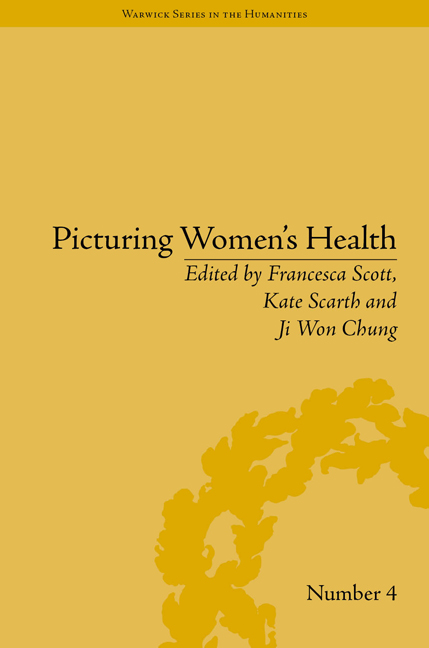Book contents
- Frontmatter
- CONTENTS
- Acknowledgements
- List of Contributors
- List of Figures
- Introduction: Picturing Women's Health
- 1 Sensibility and Good Health in Charlotte Smith's Ethelinde
- 2 Amazonian Fashions: Lady Delacour's (Re)Dress in Maria Edgeworth's Belinda
- 3 Transforming the Body Politic: Food Reform and Feminism in Nineteenth-Century Britain
- 4 Stagnation of Air and Mind: Picturing Trauma and Miasma in Charlotte Brontë's Villette
- 5 The Iconography of Anorexia Nervosa in the Long Nineteenth Century
- 6 Kate Marsden's Leper Project: On Sledge and Horseback with an Outcast Missionary Nurse
- 7 Constructs of Female Insanity at the Fin de Siècle: The Lawn Hospital, Lincoln, 1882–1902
- 8 The Fitness of the Female Medical Student, 1895–1910
- 9 Unstable Adolescence/Unstable Literature? Managing British Girls' Health around 1900
- NOTES
- Index
7 - Constructs of Female Insanity at the Fin de Siècle: The Lawn Hospital, Lincoln, 1882–1902
- Frontmatter
- CONTENTS
- Acknowledgements
- List of Contributors
- List of Figures
- Introduction: Picturing Women's Health
- 1 Sensibility and Good Health in Charlotte Smith's Ethelinde
- 2 Amazonian Fashions: Lady Delacour's (Re)Dress in Maria Edgeworth's Belinda
- 3 Transforming the Body Politic: Food Reform and Feminism in Nineteenth-Century Britain
- 4 Stagnation of Air and Mind: Picturing Trauma and Miasma in Charlotte Brontë's Villette
- 5 The Iconography of Anorexia Nervosa in the Long Nineteenth Century
- 6 Kate Marsden's Leper Project: On Sledge and Horseback with an Outcast Missionary Nurse
- 7 Constructs of Female Insanity at the Fin de Siècle: The Lawn Hospital, Lincoln, 1882–1902
- 8 The Fitness of the Female Medical Student, 1895–1910
- 9 Unstable Adolescence/Unstable Literature? Managing British Girls' Health around 1900
- NOTES
- Index
Summary
The debate surrounding insanity in the nineteenth century contained a profusion of entangled threads that are still being unpicked by historians today. It was regarded – to borrow a phrase from Elaine Showalter – as a primarily female malady. The construction of insanity as female will be explored here in a twofold investigation, to examine the population of a primarily middle- and upper-class asylum through the voices of the doctors using archival patient records and, in doing so, to reconsider the role that doctors played in the construction of insanity as a female malady in the nineteenth century. This will be achieved through the examination of medical records, completed by medical professionals through direct patient-doctor interaction. Nineteenth-century perceptions of female madness are still clearly traceable in the thinking of English society, due largely to the endurance of popular nineteenth-century fiction featuring mentally unstable females. References to the subject conjure up images of wild or uncontrollable women – Charlotte Brontë's Bertha Rochester or Mary Elizabeth Braddon's Lady Lucy Audley – or the dark, looming presence of the lunatic asylum, which provided a prison for the insane and those mistaken for the mad alike. The most memorable figure of insanity from nineteenth-century fiction is the ostensibly middle- or upper-class female maniac, as seen in little Miss Flyte in Dickens's Bleak House (1852–3), Gustave Flaubert's titular Madame Bovary (1856) and Catherine Earnshaw in Emily Brontë's Wuthering Heights (1847).
- Type
- Chapter
- Information
- Picturing Women's Health , pp. 119 - 138Publisher: Pickering & ChattoFirst published in: 2014



